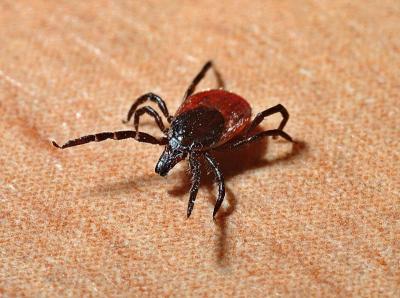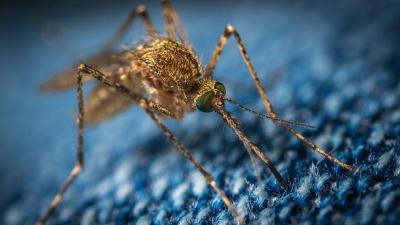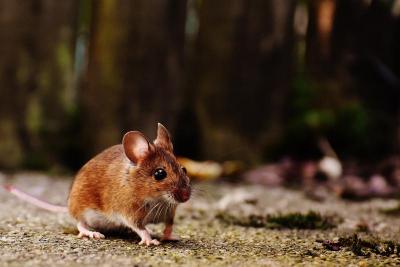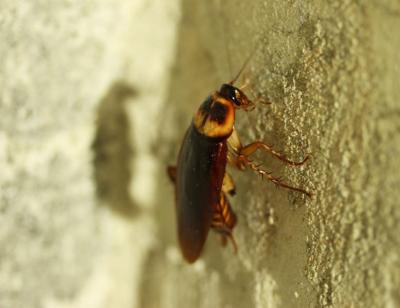-
Departments
-
- Departments Accounting Administration Aging and Disability Resource Center Arts & Culture Program Building Services Child Support Circuit Courts Clerk of Courts Coroner Corporation Counsel County Clerk Justice, Diversion, and Support
- Departments DNR Forester District Attorney's Office Emergency Management Environmental Health Extension Sauk County Health Care Center Health Highway Human Services Land Information/GIS Land Resources and Environment Management Information Systems
- Departments Parks and Recreation Personnel Register in Probate Register of Deeds Sheriff's Office Surveyor Treasurer Tri County Airport Veterans Service Victim Witness County Directory Social Media Links
-
-
Government
-
- County Board Board Members Meeting & Agendas Video Recordings Committees County Departments County Directory County Ordinances County Social Media Links Building Locations West Square Building Historic Court House Courthouse Annex Law Enforcement Center Health Care Center Highway Shop Human Services (Reedsburg) Parks and Recreation
- Calendar Meetings and Agendas Upcoming Meetings Meeting Videos on Granicus Video Recordings Forms and Documents Forms, Permits, and Applications Documents, Reports, and Presentations Policies Legal Notices/Press Releases Press Releases Legal Notices Foreclosure List Sheriff Incident Reports Open Records Request Sheriff's Dept Records General Records Request
- Voting / Elections MyVote - Polling Locations Register MyVote WI Election Results Bids and Proposals Submitting Bids / Bid Process Current RFPs, RFBs, RFQs State Government State Agencies Hours of Operation Hours
-
-
Community
-
-
Community News
Business / Economic Development Place Plan Start Up Resources Business Financing Chambers of Commerce Registration of Firm Name Creating an LLC Permits Revolving Loan Fund (RLF)/CDBG Persons with Disabilities Apply for Benefits Disability Rights Wisconsin Disability Benefit Specialists Housing Transportation Caregiver Resources Employment Training - Residents Voting Dog License Elected Officials Parks Recycling Renters Libraries Marriage School Districts Severe Weather Shelters Road Conditions DMV Services Sheriff's Incident Reports Online Services List of Online Services GIS Tax Parcel iSite Property Tax Info (ALRS) Pay Clerk of Court Fees
- Homeowner/Property Property Tax Information Property Maps Zoning Information Permits Recycling School Districts Residential Vacation Check Form Foreclosure List Family and Health Nurse-Family Partnership Immunization Program Women Infant Children Parks and Recreation Arts and Culture Libraries School Districts
- Seniors Retirement information Elderly Benefit Specialists Transportation Long Term Care Services Project Lifesaver Caregiver Resources Nutrition & Dining Centers Employment and Training Veterans Federal VA Services State Programs & Services Employment & Education Support Groups Health Care Home Loans Pension Benefits Transportation
-
Community News
-
-
Explore
-
-
ExploreSaukCounty.com
Parks Hemlock Park Lake Redstone Park Man Mound Park North End Boat Landing Sauk County Forest Summer Oaks Boat Landing Timme's Mill Weidman Woods White Mound Park Yellow Thunder Park -
Video Tour of Sauk County
Trails Great Sauk State Trail Hiking Horseback Skiing Snowmobiling Snowshoeing Outdoors & Nature Boat Landings Fishing Hunting Lakes, Rivers & Creeks Local Parks Natural Areas & Public Lands Nature Centers & Conservancies State Parks
Places to Eat & Drink Things to Do Places to Stay
-
ExploreSaukCounty.com
-
-
I Want To…
-
- Apply Marriage License Employment Passport Child Support Public Assistance Food Share Benefits BadgerCare Project Lifesaver Veteran's Benefits Dog License Permits Board of Adjustment Appeal/Zoning Appeal Arts & Culture Grants
- Request Obtain? Birth, Marriage, & Death Certificates Divorce Decree Court Transcripts White Mound Camping Reservation County Park Sticker Transportation Services Hunting Fishing Rec Permits Timber Cutting Permits Vehicle Registration Drinking Water Test Kits Soil Test Kits Pay Court Fees Traffic Tickets Property Taxes Child Support CPZ Fees
- File Divorce Will Deeds Property Liens Small Claims Guardianship Permits Claim for Service Related Disability (Veteran's) Appeal Zoning Ordinances Certified Survey Map Volunteer Aging & Disability UW Extension Parks Land Conservation Neighbor in Need
- Find Agendas and Minutes Property Tax Info Maps Foreclosures Sheriff's Incident Reports Warrant List Sex Offender Registry Zoning Info Voting/Election Info Sanitary/Septic Info Recycling Info Caregiver Relief/Assistance Genealogy Records Vote Register to Vote Polling Places
-
Vectors and Pest Control
Ticks

Ticks are found throughout the State and have the potential to cause various disease. They are small, flat arthropods. The adults and nymphs have 8 legs, and the larva have 6 legs. These creatures need a blood meal to lay their eggs. This is because the blood meal provides the female with protein needed for reproduction. The main disease that most people are familiar with is Lyme's Disease. Lyme's Disease is spread from the bite of an infected Deer Tick. There are other species, but when looking at Lyme's Disease, it is important to know that only Deer Ticks can spread Lyme's Disease. The bacteria, B. burdorferi, lives in the ticks gut and as it attaches and feeds on humans, the bacteria is transferred to the bloodstream.
If a tick is found attached, the best removal method is with pointy tweezers. Use the tweezers and grab as close to the skin as possible, and pull straight up. Do not twist or scratch it off. Rinse the area with soap and water, and disinfect.
Mosquitos

Everyone is familiar with that annoying buzz in the summer time. Mosquitos in Wisconsin are an unfortunate staple of the summer season. They are found all over, from people's backyards to deep in the forest. Most people also know that mosquito's can transmit certain diseases. There are a couple diseases that most people have heard about, like Malaria and West Nile virus, but there are other less known diseases as well, like Eastern Equine Encephalitis and chikungunya virus, that pose a risk to human health here in Wisconsin. The best way to prevent disease from mosquitos is to prevent being bitten in the first place.
There are many types of mosquitos, but prevention strategies are all the same. One of the most important steps is to use a mosquito repellent when performing outdoor activities. Avoiding the outdoors during peak mosquito time, (dusk and dawn), can also reduce exposure risk. A list of repellents at the end of this page from the EPA website is available. For prevention in the household, using screens and netting over all openings to the outside prevents them from getting in.
Rodents

The presence of rats or mice in your home/business can be a nuisance, cause property damage, and transmit disease. Coming in contact with these pests, their urine, or their feces has been linked to several human diseases including leptospirosis, typhus, rat-bite fever, and salmonellosis. The activities of the rodents can lead to significant property damage from gnawing and digging. This can result in contamination of food and beverages and damage of wood particle boards, insulation, and electrical wiring. Damage to wiring is particularly troubling because it can increase the risk of a fire.
The prevention of rodents from entering your home is an important part of preventing diseases. It is important to keep your home and property free of excess items and rubbish, because rodents tend to make their homes in such places. Some examples of potential outdoor rodent homes include wood piles, bushes, tall grasses, appliances, furniture, and garbage that has been left on the ground. Indoors, they can be found in the insulation of walls or ceilings, inside the crawl spaces, cupboards, counters, bathtubs, and shower stalls.
Prevention of entry is the most effective way to control rodents. If rodents have already established themselves in your home, they can be controlled by the use of traps. If trapping is undesirable, controlling food, water, and shelter are vital in controlling pest populations. Examples include making sure that garbage cans lids are closed tightly and are emptied regularly, stacking fire wood 18 inches off the ground and away from all buildings, keeping home and property clear of rubbish, and covering all openings to your house.
Poisons are not recommended. The use of poison as control of rats and mice is not recommended because children and other animals may eat the poison and become ill, or in some cases, die. Also, poisoned rodents can die in hard to reach places causing a bad smell. If poisons are to be used, contact a qualified pest control company.
Bed Bugs
Over the past few decades, the reemergence of bed bugs has gained the interest of health officials nationwide. Bed bugs are small insects that feed on the blood of people, other animals, and birds. They are oval with flat, rusty red colored bodies and they cannot fly or jump. Bed bugs are not necessarily a sign of poor hygiene or cleanliness. Bed bugs are not considered a hazard, because their bites are not known to transmit disease. The bites, however, can become swollen and itchy, resulting in secondary infections, anxiety, and sleeplessness. Bed bugs often hide in bedding, mattresses, cracks in walls, and furniture. Bed bugs usually come out at night and bite when people are sleeping. They may be difficult to control without help from a pest control professional. Over the counter pesticides and aerosol foggers (bug bombs) are not effective in controlling bed bugs. For additional information on bed bugs, please visit the links provided below.
Cockroaches

Cockroach infestations pose a potential human health hazard because they are considered an allergen source, an asthma trigger for residents, and can spread certain illnesses/diseases. Cockroaches spread illness differently than say mosquitos or ticks. A cockroach does not bite a person to feed. The diseases come from the bacteria that they carry on their exoskeleton (outer bodies). They can carry Salmonella, E. coli, and Listeria, to name a few. Their droppings or body parts can trigger asthma and other allergies. They may also be considered a public nuisance because their tendency to migrate to other buildings or structures when food sources become scarce, causing problems for neighboring residence in the community. Care must be taken to prevent the infestation from migrating to neighboring residence.
Good home/building sanitation is key to prevent cockroaches. Keep food in sealed containers, emptying garbage regularly and sealing points of entry are all important prevention steps. Cockroach infestations can also be handled with pesticide treatments. Professional Pest management is recommended, but there are products that can be used by the homeowner. Apply pesticides carefully, following the directions on the label. In order for treatments to work, it is important to keep the home or building clear of clutter, food scraps, and other unnecessary materials. Dog and cat food should not be left out between feedings. All dishes should be cleaned immediately after using them. The sink should be thoroughly cleaned after washing dishes to eliminate any food or grease debris. For additional information on treating cockroach infestations, please visit the web links below.
